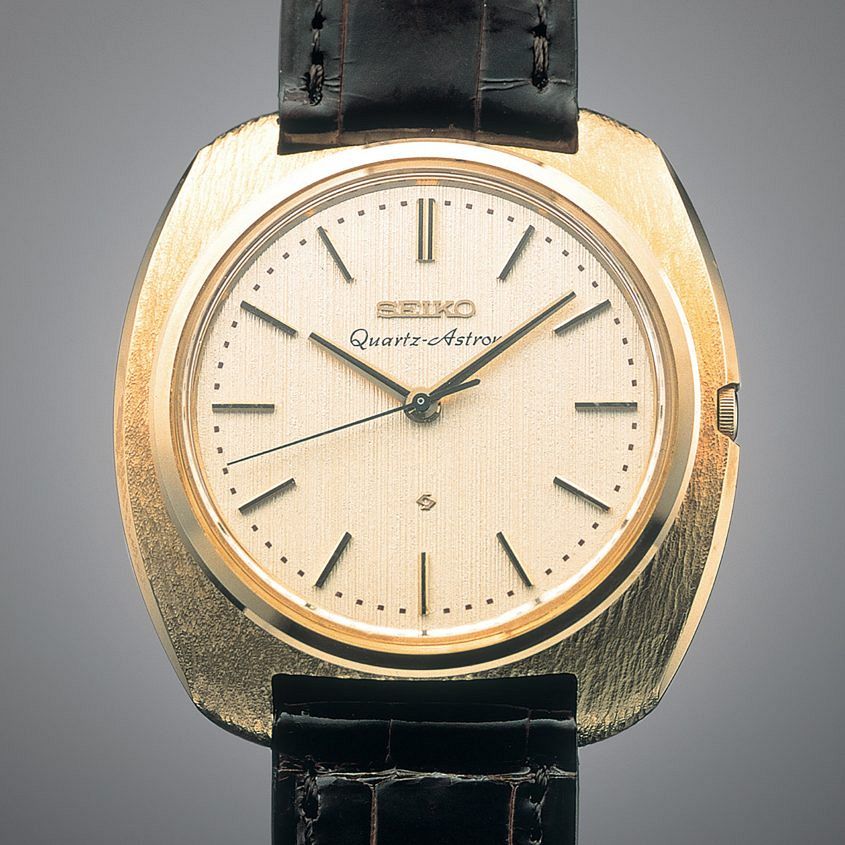 The development of quartz technology essentially removed the need for the Swiss mechanical watchmaking industry. And yet, both the Swiss and quartz watches are still around. More than that, they’re sharing the bed. And getting more adventurous. Half a century ago, a watch was released that was powered by a battery, and cost the equivalent of a family car. The Seiko Astron spelled the dawn of a new age in watchmaking, one that was moving the industry out of the hands of the solitary craftsman and onto the factory floor. In any industry that has operated the same way for generations, abrupt changes in technology always have winners and losers. While the Swiss and Japanese watch industries were neck and neck in their development of quartz technology towards the end of the 1960s, Seiko was the first to market with their Astron. Regardless of which team you were rooting for, it was a turning point in the history of timekeeping: “the single most important development of the 20th century in horology”, according to renowned collector and author James Dowling. Over the following decades, it would plunge the Swiss watch industry into turmoil. The automated global marketplace forced many companies involved…
The development of quartz technology essentially removed the need for the Swiss mechanical watchmaking industry. And yet, both the Swiss and quartz watches are still around. More than that, they’re sharing the bed. And getting more adventurous. Half a century ago, a watch was released that was powered by a battery, and cost the equivalent of a family car. The Seiko Astron spelled the dawn of a new age in watchmaking, one that was moving the industry out of the hands of the solitary craftsman and onto the factory floor. In any industry that has operated the same way for generations, abrupt changes in technology always have winners and losers. While the Swiss and Japanese watch industries were neck and neck in their development of quartz technology towards the end of the 1960s, Seiko was the first to market with their Astron. Regardless of which team you were rooting for, it was a turning point in the history of timekeeping: “the single most important development of the 20th century in horology”, according to renowned collector and author James Dowling. Over the following decades, it would plunge the Swiss watch industry into turmoil. The automated global marketplace forced many companies involved…
The post Quartz, the killer – A history of quartz watches, Part 1 appeared first on Time and Tide Watches.
Continue reading ‘Quartz, the killer – A history of quartz watches, Part 1’